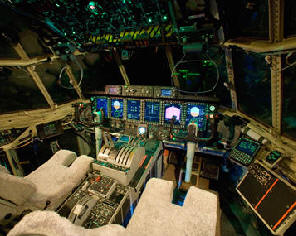|
|||||||||||
|
|
|
|||
|
By |
||||
 |
August 31, 2010 –
The Boeing Company announced the induction of the first C-130 aircraft
slated to receive the Avionics Modernization Program (AMP) upgrade at
“
Air Force workers
at Robins will install glass cockpits that include a head-up display;
six flat-panel, full-color displays; and night-vision capability in 10
of the 20 LRIP aircraft. |
|||
|
|
||||
|
“The C-130 AMP is
production-ready,” said Mahesh Reddy, C-130 AMP program manager for
Boeing. “Today marks a very important day for the warfighter. Boeing and
the Air Force are one step closer to delivering a fleet of C-130 AMP
aircraft.”
Boeing will begin
its portion of the installations in early 2012 at its
The central
element of Boeing's AMP configuration is Communication, Navigation,
Surveillance/Air Traffic Management compliance, without which the C-130
fleet would be prohibited from certain worldwide air-navigation routes.
An upgraded, common fleet offers dramatic life cycle cost benefits
including greater reliability, simplified fleet-wide training, and a
flexible architecture designed to reduce crew size and accommodate
future technology insertion. |
||||


